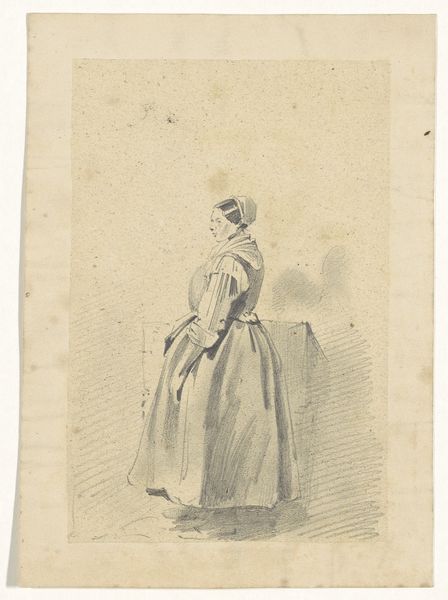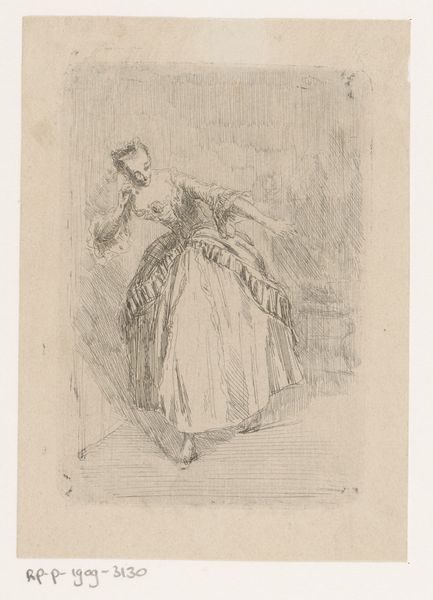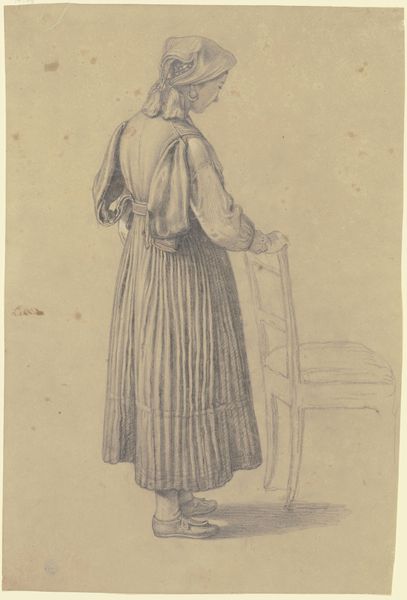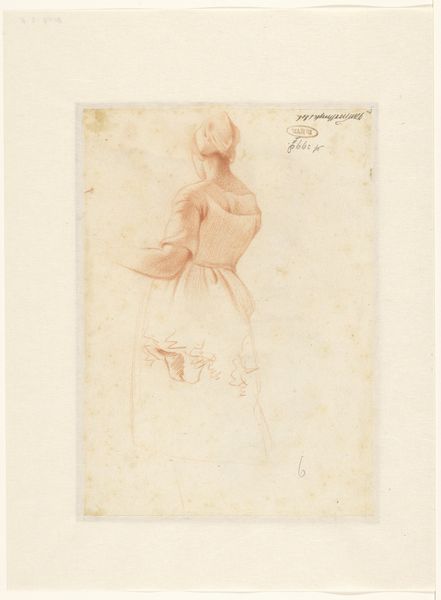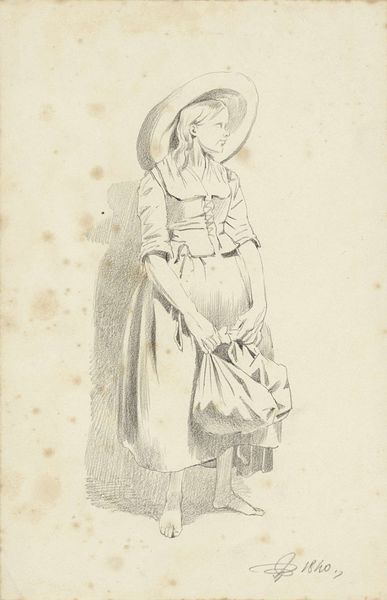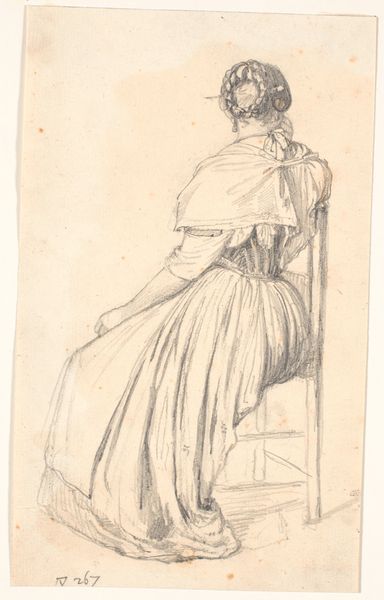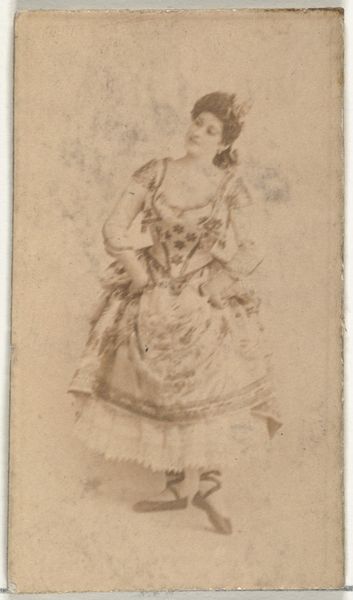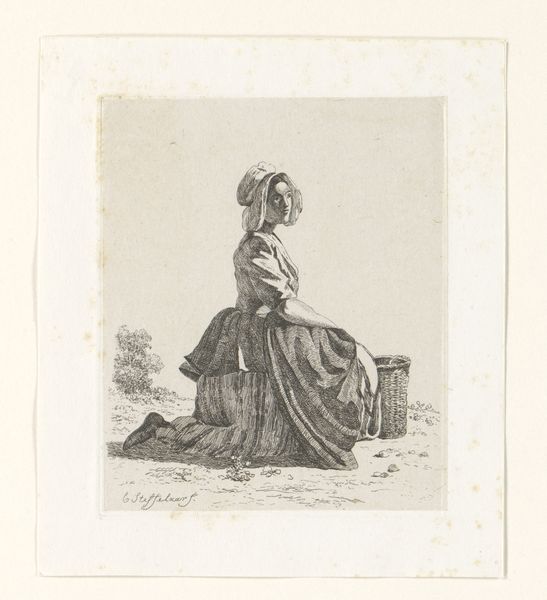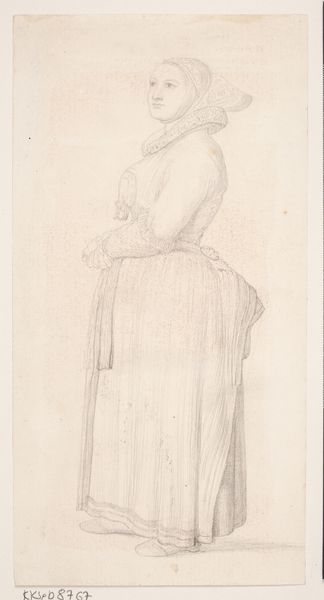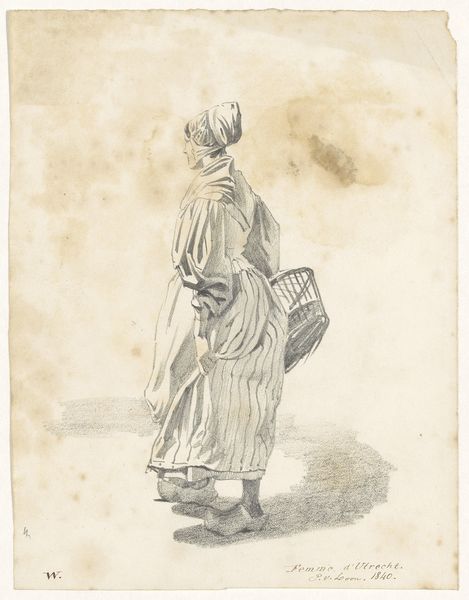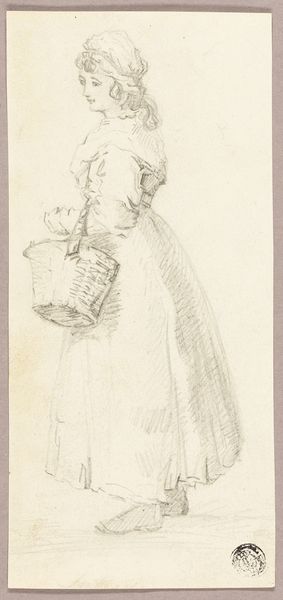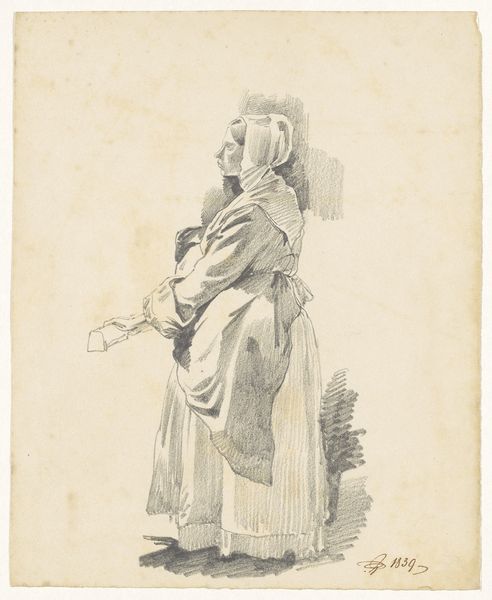
Dimensions: height 186 mm, width 166 mm
Copyright: Rijks Museum: Open Domain
Johannes Tavenraat made this drawing of a young orphan girl, Weesmeisje, sometime in the mid-19th century using graphite on paper. Tavenraat employed a traditional drawing technique to depict the figure, using precise lines to capture the texture of her dress, and the light on her face. Yet it's the social context, the orphan girl, which is perhaps most revealing. The Industrial Revolution was in full swing during Tavenraat's lifetime, leading to significant social changes. The rise of factories and urban centers created new opportunities, but also new forms of poverty and inequality. By focusing on the figure of an orphan, Tavenraat draws attention to the human cost of progress, making the viewer reflect on the lives of those marginalized by society. The starkness of the graphite on paper enhances the work's message. It serves as a poignant reminder of the social realities of the time, prompting us to consider the relationship between art, labor, and social responsibility.
Comments
No comments
Be the first to comment and join the conversation on the ultimate creative platform.
